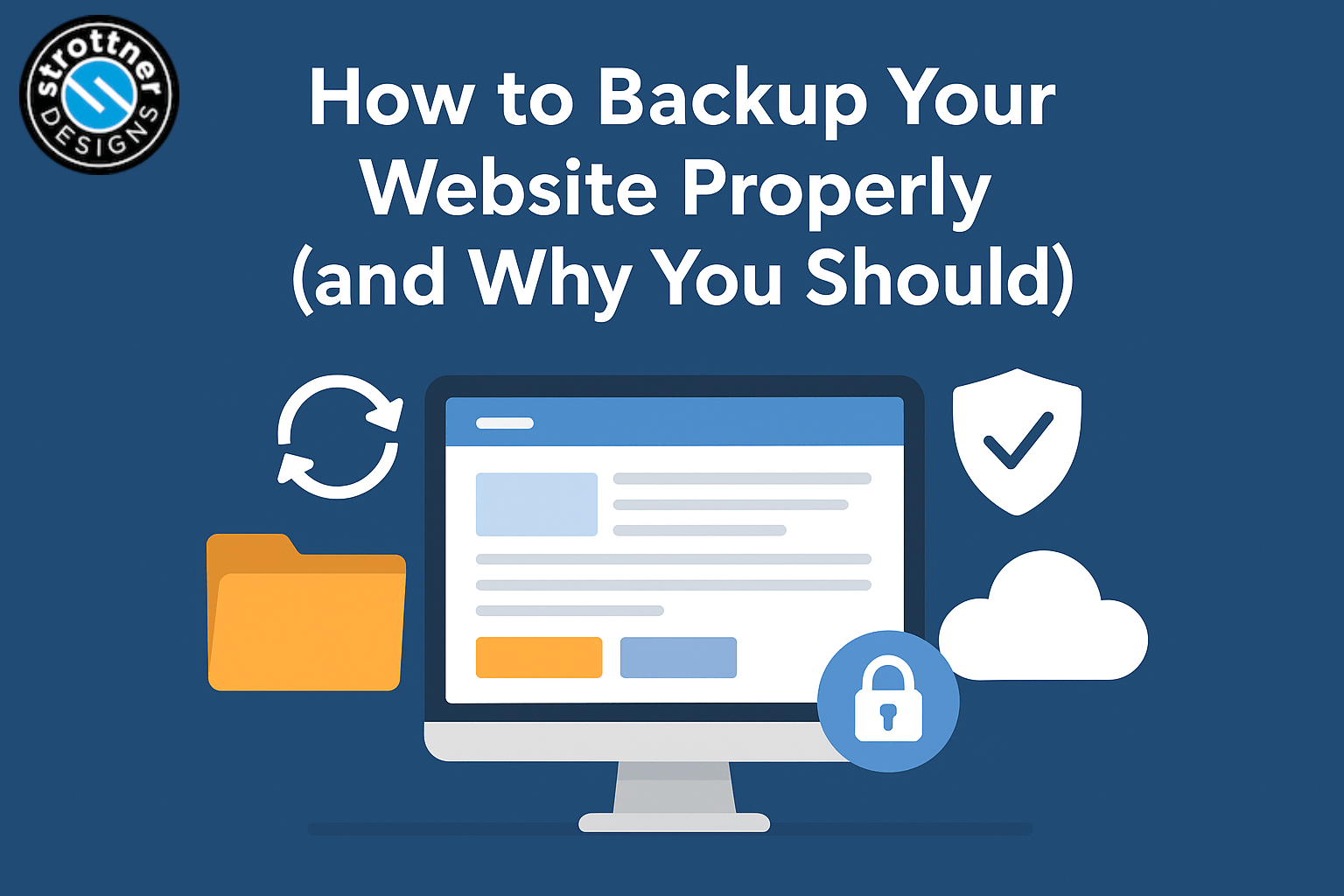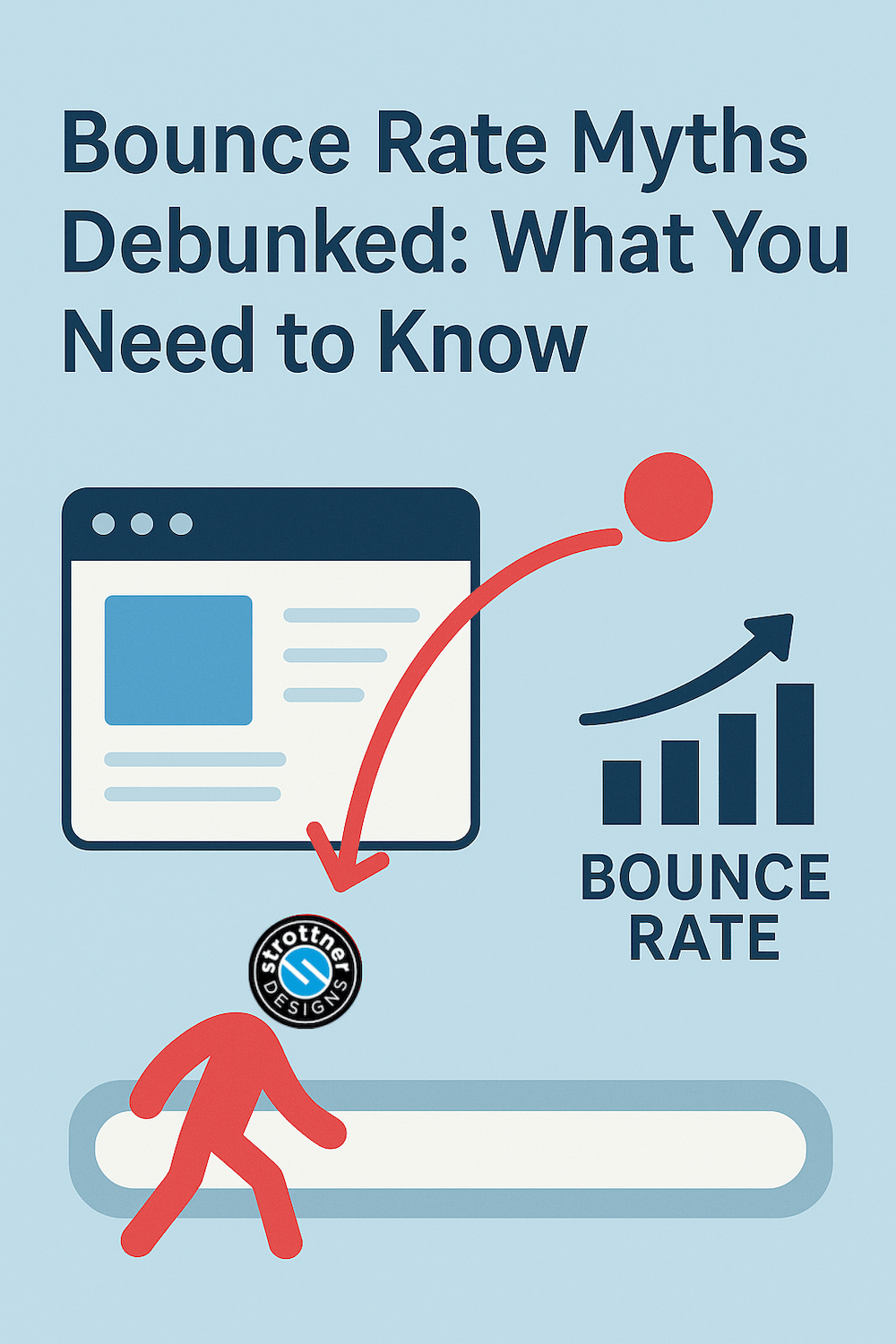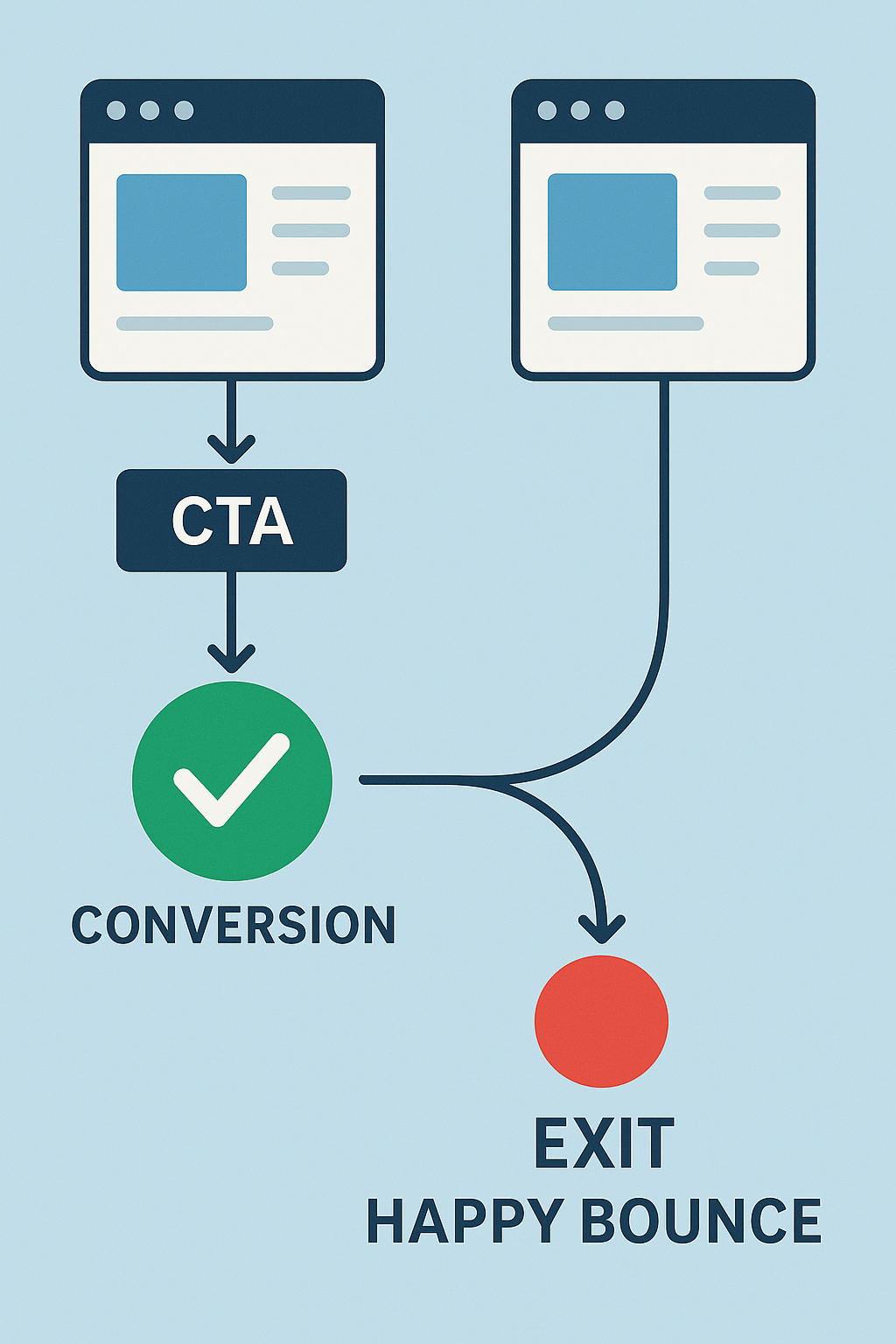
 As we’ve discussed over the last few weeks, bounce rate refers to the percentage of visitors who land on a single page of your site and leave without clicking anywhere else. Think of it like someone walking into your store, browsing one shelf, then walking out.
As we’ve discussed over the last few weeks, bounce rate refers to the percentage of visitors who land on a single page of your site and leave without clicking anywhere else. Think of it like someone walking into your store, browsing one shelf, then walking out.
A high bounce rate isn’t always bad. But it can indicate issues with your content, design, or load speed. Understanding bounce rate, and bounce rate myths, is key to improving user engagement, SEO performance, and ultimately, conversions.
This is like assuming every guest who leaves your party early hated the music. Maybe they just came for one specific conversation, had their moment, and left happy.
A bounce just means someone visited one page and didn’t click further. That’s it. It doesn’t mean they hated your site. Maybe your landing page was so efficient, so clear, so perfectly designed (cough like something Strottner Designs might build cough) that no further navigation was required.
SEO Tip: High bounce rate on a blog post isn’t a red flag if visitors stay a while and engage with the content. Google values “dwell time” — how long users remain on a page.
Search engines aren’t lurking behind your analytics, deducting points for every bounce. Google has stated that bounce rate is not a direct ranking factor.
What matters more is user intent, content relevance, and engagement signals (like time on site, clicks, and conversions).
High bounce + low time-on-page? That’s a red flag. High bounce + long time-on-page? You’re probably doing something right.
SEO Tip: Reduce bounce rate by improving internal linking, optimizing page load speed, and using clear CTAs.
Let’s not throw out the whole dinner because someone skipped dessert. A bounce is not inherently bad. The obsession with “lowering bounce rate” is a distraction if you’re not looking at the why behind the number.
Some pages are meant to be short stops: confirmation pages, FAQs, or single-offer landing pages. A “successful bounce” is a thing.
SEO Tip: Focus on optimizing user journey, not just bounce rate. Guide visitors to the next logical step, whether that’s reading another post or booking a call.
A 70% bounce rate on a pricing page? That’s worth investigating. A 70% bounce rate on a blog post explaining epoxy vs. acrylic finishes? Not a big deal.
Different pages serve different purposes. Comparing bounce rates across the board is like judging a fish by how well it climbs a tree.
SEO Tip: Segment your analytics. Analyze bounce rate by page type, device, traffic source, and user intent.
Instead of chasing bounce rate down a rabbit hole, ask:
SEO Tip: Use tools like Google Search Console, Hotjar, and GA4 to get a full picture. Or enlist Strottner Designs, and we provide you with this reporting every month.
We get it. Metrics can be overwhelming. You want leads, sales, and ROI — not a crash course in analytics.
That’s why we take a data-driven, results-focused approach to SEO and website management. At Strottner Designs, we manage your site like it’s our own storefront.
✅ Fast load times ✅ SEO best practices ✅ Strategic content structure ✅ User-first design
We help you:
Let’s leave the bounce rate panic where it belongs: with myths about black cats and walking under ladders. It’s not about chasing a lower number; it’s about designing your site and strategy to serve your goals.
So the next time you see a scary-looking bounce rate, don’t panic. Contact Strottner Designs. We’ll help you translate the data, adjust your digital strategy, and build a web presence that not only keeps people around but turns them into customers.
Because in the end, it’s not about the bounce. It’s about the business.
Ready to turn your website into a conversion machine? Contact us today to get started, we have a program for you!
Interested in a new site and SEO, or just a new site? Visit Home of the Free Website to learn how we can build you a free or affordable site.
Privacy Policy | Sitemap | Terms of Use